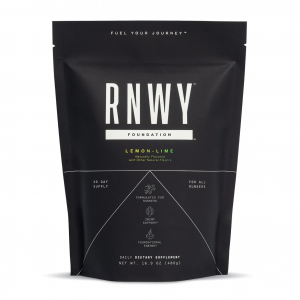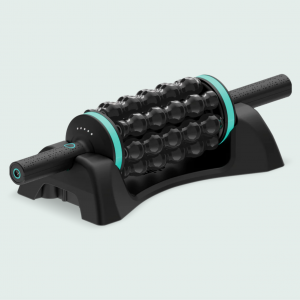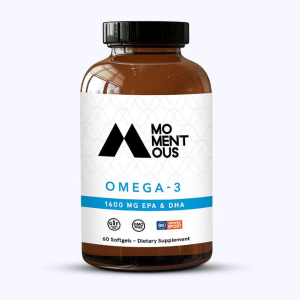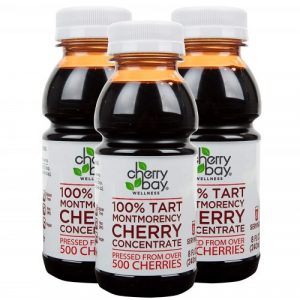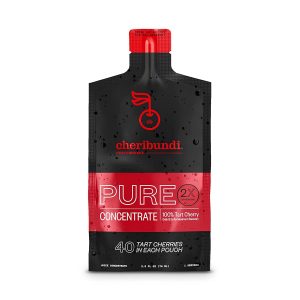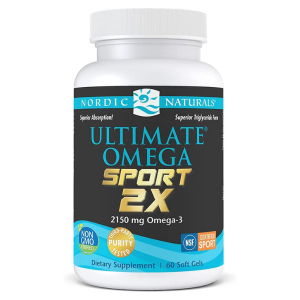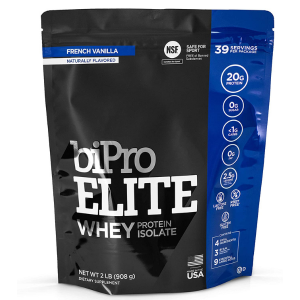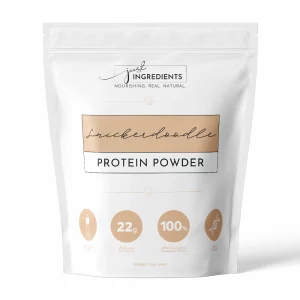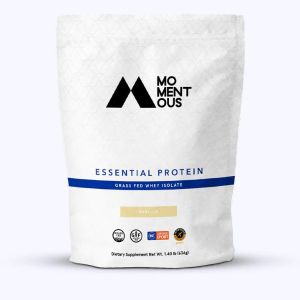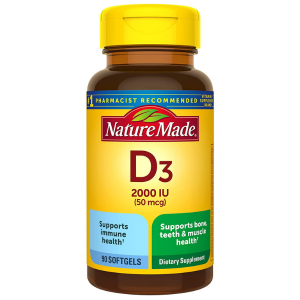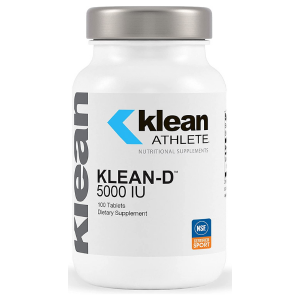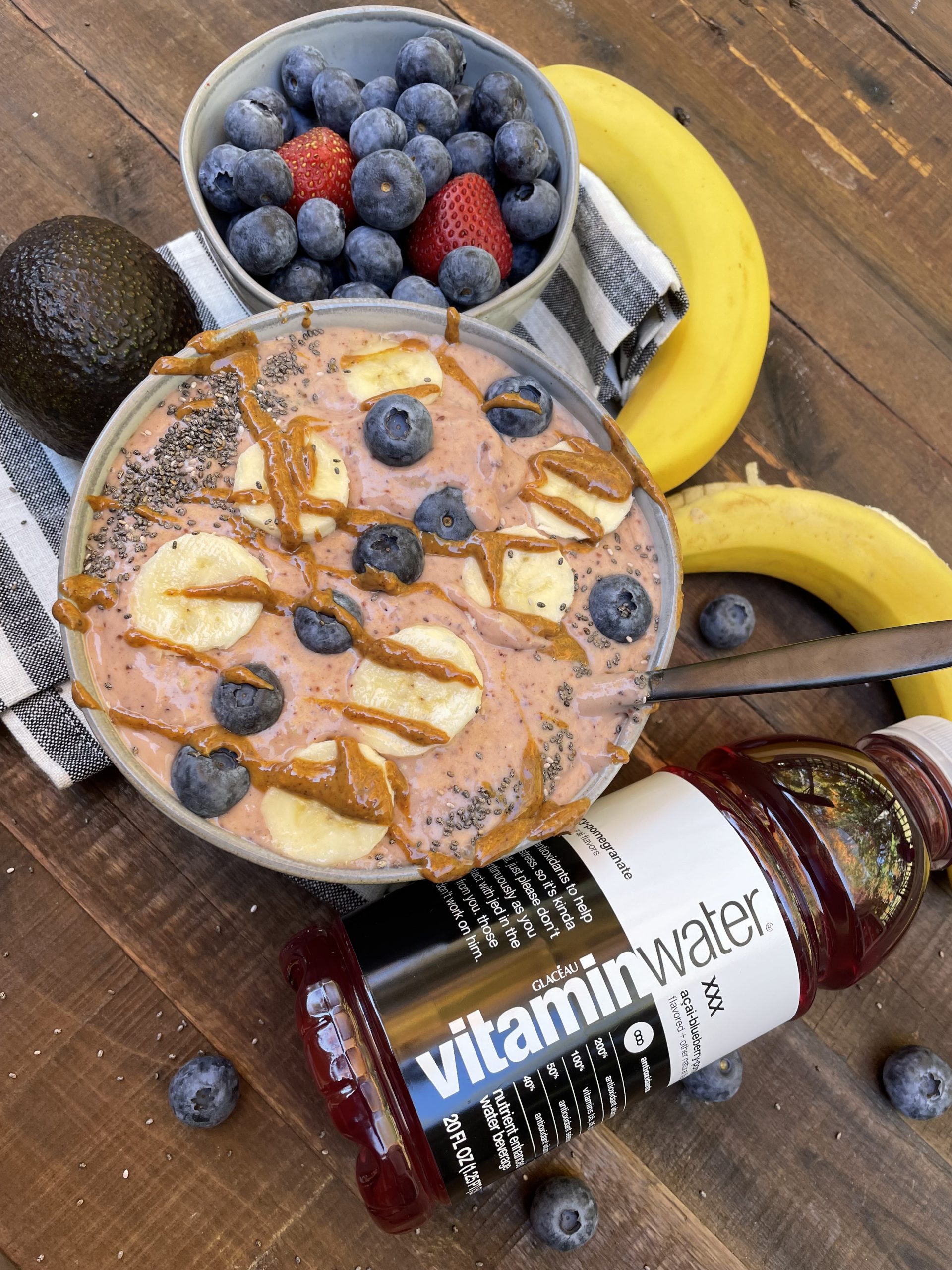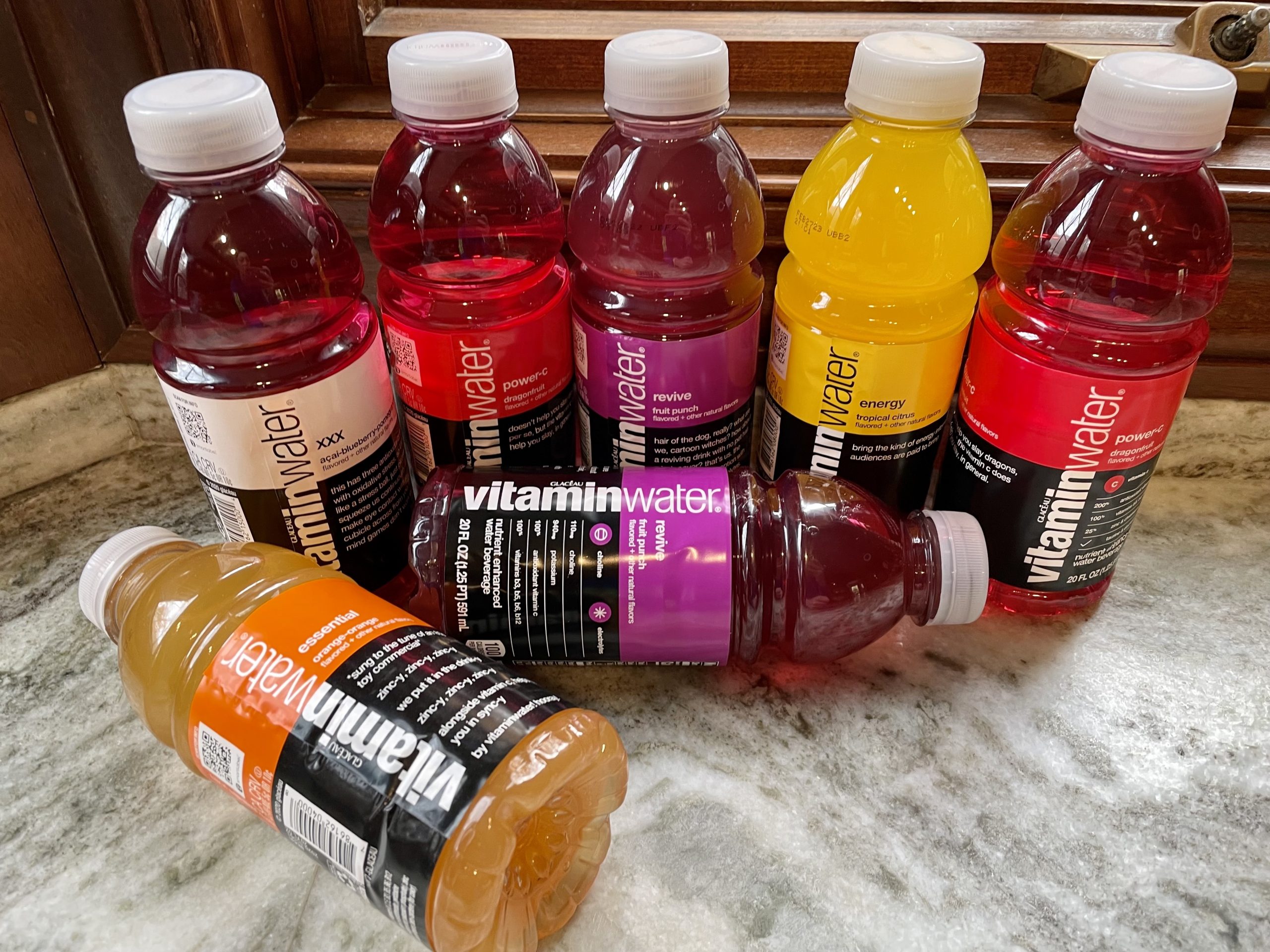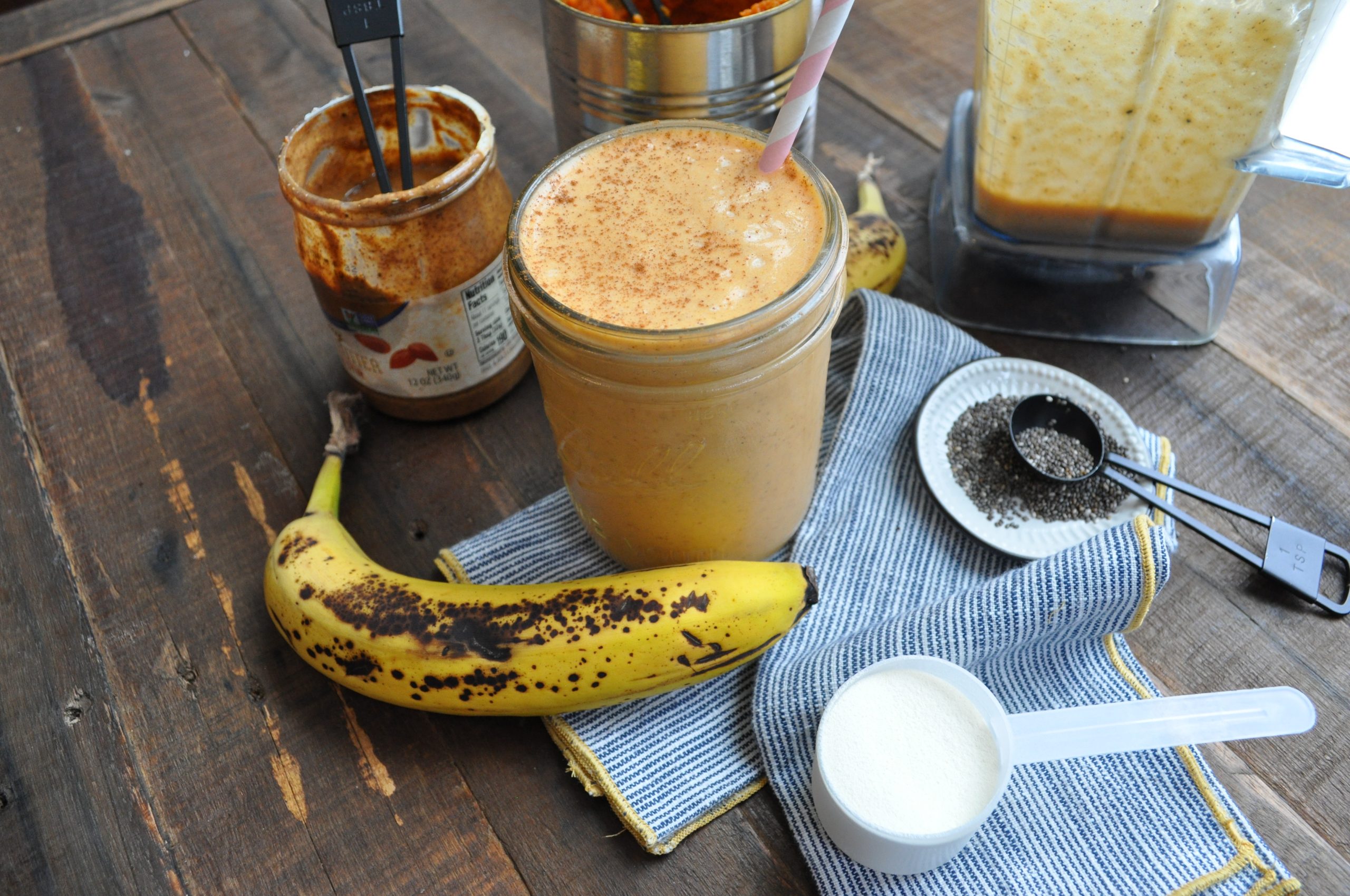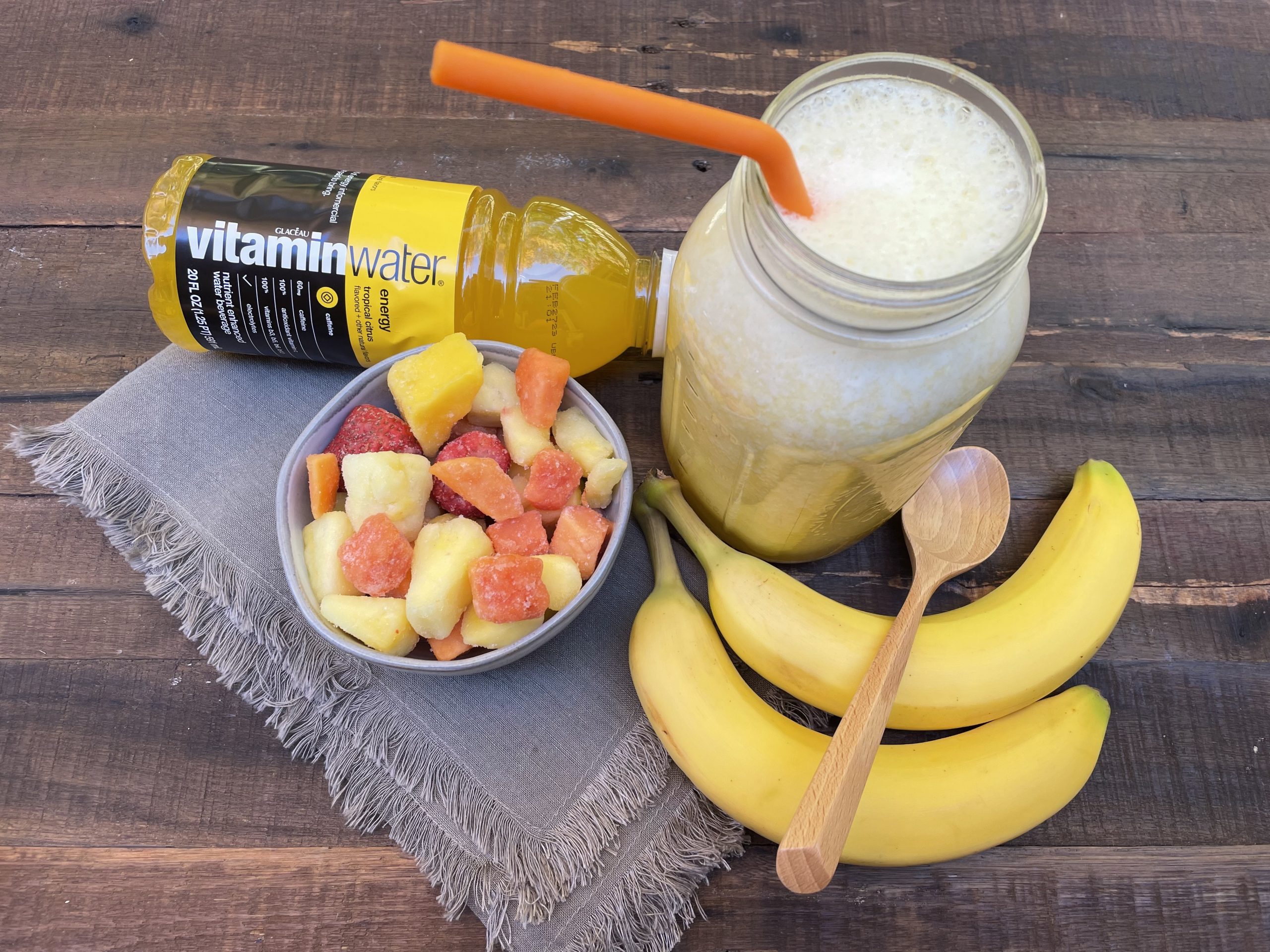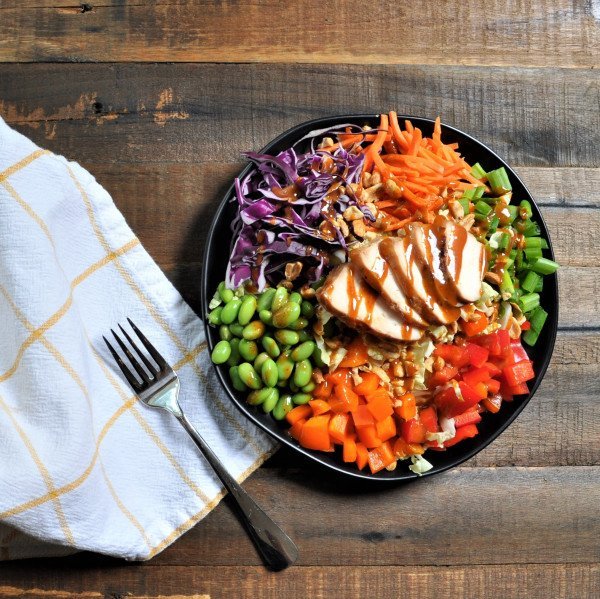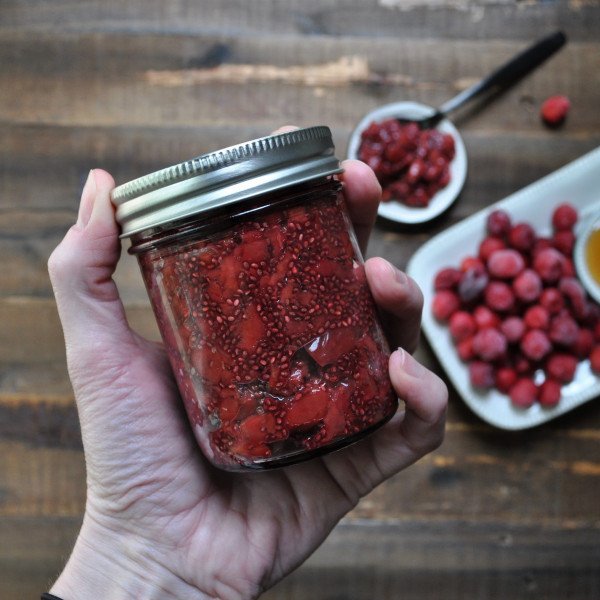Evaluating Iron Status in Endurance Athletes
Evaluating Iron Status in Endurance Athletes
In the previous part of this series, we looked at what iron does in your body, why so many runners (particularly women) deplete their stores, and which symptoms might indicate that you need to top up on this mighty micronutrient. Now let’s switch our attention to the best and most objective way to confirm if your ferritin and other iron markers are too low.
How do I know if I'm iron deficient?
I’ve worked with enough athletes to suspect when someone is low on iron, especially when they’re dealing with performance shortfalls, persistent fatigue, and some of the other symptoms we mentioned in part one without any other probable explanation. But I always like to have confirmation for my hunch by having my clients get bloodwork done. We always, always, always want to check our labs prior to supplementing, so we know that we are treating and supplementing correctly.
Where can I get lab work done, and what labs should be checked?
Your primary care doctor can order labs to be drawn, whether it’s in-office or they send you to a lab. This option will likely be the most cost-effective if you have health insurance. Other options are to order your own labs from somewhere like Quest Diagnostics or Inside Tracker. Try to make sure you wait at least 48 hours after a race or hard training session before testing so you don’t skew the numbers. Once the panel has been drawn, you should get the results fairly quickly.
There are several iron-related labs that can be checked. While ferritin is a common indicator of iron stores, it can give a false reading if you’ve been sick or under intense training or lifestyle stress. In which case, other markers can be useful. It’s also helpful to see the “whole picture” when it comes to iron labs <aka not just looking at one stand alone lab value>, so it’s important that you ask for CBC, iron panel and ferritin.
What should my ferritin level be as an endurance athlete?
Once you get the test results back, you’ll want to know whether your ferritin level is low, high, or just about right. The tricky thing is that the range is very broad – what’s considered to be “normal” at your doctor’s office is 10 – 120 ng/mL for females and 20 – 250 ng/mL for males. However, in running, cycling, swimming, triathlon, and other endurance disciplines, performance is usually optimized at or above 40 ng/mL, per a study by Japanese exercise scientists and other papers. At altitude, this can rise to more than 50 according to a study by Swiss researchers, as at higher elevation we need more oxygenated blood to sustain pace and power output. To make it even more complex, optimal ferritin levels can vary from person to person – Person A may feel great with a ferritin of 40 ng/mL, while person B might need theirs at 50 ng/mL.
My doctor said my ferritin level is ok, and my sports dietitian says it is low. Why is there a discrepancy?
There could be different parameters than your physician is currently not aware of – you’re probably the healthiest person they’ve treated all day, and labs within normal limits are typically a good sign. However, just because your iron levels are within normal limits for baseline health doesn’t mean that they’re optimized for endurance performance – the two goals are completely different. Your doctor isn’t wrong, but may only be looking at your ferritin and other iron markers through a lens for an average <sedentary to mildly active> adult.
It’s this kind of contrast that shows why you might benefit from working with a registered dietitian or other specialist. Just having blood test data is only the first step – it’s what you do with the information that’s most important. So you need someone who has the right knowledge & experience to interpret the results, take into context your training and medical history, nutrition, and other factors, to help you come up with a plan.
If you need a sports nutrition expert to analyze your labs & provide recommendations, take a look at our Featherstone Lab Consult. Simply answer some questions, attach your labs, and Meghann will analyze your lab work & send you an email with recommendations with in 10 business days.
How often should I check my iron status?
As levels of ferritin and other iron markers fluctuate over time, a one-off test might only give you a snapshot view of your body’s stores. Here’s a suggested frequency if you’re interested in ongoing testing that might enable you to keep tabs on your levels so you can address deficiency and even make pre-emptive changes if an initial panel shows a decline.
Annually: Once a year might be fine if you do not have a history of iron deficiency, and you have been feeling well during training and races.
Biannually: A test every six months might be better if you have a slightly low ferritin and are trying to increase with high iron food, are a female endurance athlete, or have the intention to increase training or head to altitude within the next 12 months.
Quarterly: Getting a panel every three months is advisable if you have a long history of iron deficiency, are currently supplementing trying to get an increase in ferritin, are vegetarian/vegan, see evidence of low energy availability, are continually training at high volume and intensity, struggle with ongoing fatigue/lethargy, or plan to train at altitude within six months.
Check back next week, when we will share how to increase your iron and ferritin levels if they’re too low.
Do you need an expert to interpret your labs? The Featherstone Lab Consult is now available!
1. Yuki Kobayashi et al, “Attempt to Determine the Cut-Off Value of Serum Ferritin for Iron Deficiency in Male College Student Runners,” Journal of Nutritional Science and Vitaminology, 2020, available online at https://pubmed.ncbi.nlm.nih.gov/33132346. 2. German Clénin et al, “Iron Deficiency in Sports – Definition, Influence on Performance and Therapy,” Swiss Medical Weekly, October 2015, available online at https://pubmed.ncbi.nlm.nih.gov/26512429.
Disclaimer: The content in our blog articles provides generalized nutrition guidance. The information above may not apply to everyone. For personalized recommendations, please reach out to your sports dietitian. Individuals who may chose to implement nutrition changes agree that Featherstone Nutrition is not responsible for any injury, damage or loss related to those changes or participation.
Iron Deficiency in Runners
Iron Deficiency in runners: Causes, Symptoms & Why Female Runners Are at Greater Risk
In our recent post on recovery supplements for runners, we almost included ferritin but decided that it deserved its own three-part series. One of the reasons is that I get a lot of client questions about iron and ferritin and often trace my endurance athletes’ limitations back to a previously undetected deficiency. Let’s look at what ferritin is, why runners are often low in it, how you might be able to tell if you’re iron deficient, and why female athletes are more susceptible.
What is ferritin and why does iron function matter for athletes?
Ferritin is a blood protein that is your body’s preferred storage form of iron, which it releases as necessary. Around 25 percent of all the iron in your body is typically contained in ferritin. The demand for iron goes up when you’re training or racing because it’s the building block for hemoglobin in the bloodstream, which delivers oxygen from the lungs to your muscles via red blood cells. Iron is also needed to regulate myoglobin, a protein found in muscles that binds to and releases oxygen, and cytochromes, a key catalyst of energy production. It plays a part in immunity, DNA synthesis, pH balance, and many other processes too. Unlike some other micronutrients, your body cannot make its own iron, so you have to take it in through food and/or supplementation.
Why does iron deficiency or low ferritin occur and how prevalent is it in endurance sports?
According to a study on female basketball players, “Athletes experience disturbances of systemic iron homeostasis, especially during training periods characterized by intense training loads.” The authors stated that iron in female athletes can be twice as low as in sedentary groups. It’s also arguably more common. A review published in the European Journal of Applied Physiology stated that five to 11 percent of male athletes tested in previous trials were low on ferritin, which is an indicator for inadequate iron. This rose to a whopping 15 to 35 percent of female athletes. Other studies have pegged these numbers even higher, suggesting that up to 56 percent of female endurance athletes have insufficient iron stores.
So why is this? We can lose iron through sweat and urine, the GI tract, frequent use of NSAIDs, and a phenomenon known as foot-strike hemolysis. This occurs when red blood cells in the feet are destroyed as you pound the pavement or trail, which not only results in the loss of iron, but also needing to utilize more to repair the damage. That might explain why runners, basketball players, and athletes in other sports that involve a lot of ground contact have higher rates of deficiency.
Why are women more likely to be iron deficient?
There are several reasons why low iron might affect more female athletes than males. First, some can be lost during monthly menstruation. Second, I see more women who are on vegan or vegetarian diets. While you can find iron in some plant-based sources, it’s more difficult to absorb because it’s in the non-heme form. Whereas fish, meat, and poultry all contain the more available form, heme iron. Those who eat fortified foods find it easier to boost their intake. The overall quantity of food female athletes eat may be significantly less than a larger male athlete making it harder to get sufficient iron.
What are the symptoms of low ferritin/iron deficiency?
The authors of the basketball study wrote that “Insufficient reserves of iron in the body can reduce athletic performance, which may be manifested as fatigue, exercise intolerance, or even cognitive function impairment.” I often hear clients complain of not being able to hit or maintain their target paces in training, feeling like they’re exerting more effort than usual, hitting the wall sooner, and generally feeling heavy and lethargic. They might also notice decreased adaptation to their training and failure to recover fully between sessions. Increased resting and active heart rate, dizziness, and shortness of breath during exercise can become issues too.
Certain sessions like sprints and intervals can become harder because power output declines and time-to-exhaustion is reduced when ferritin levels are low. Some athletes might experience irritability and other mood disturbances, find it hard to focus during workouts, or become apathetic and lose interest in training altogether. They could also start struggling with niggling injuries and more frequent bouts of illness. In these ways, iron deficiency can be mistaken for chronic overtraining, as many of the symptoms are the same.
Next week, we’ll continue the ferritin series & explore how testing ferritin and iron levels can help identify if you’re iron deficient and inform what to do about it.
1. Justyna Cichoń et al, “Effect of an Acute Exercise on Early Responses of Iron and Iron Regulatory Proteins in Young Female Basketball Players,” BMC Sports Science, Medicine and Rehabilitation, April 2022, available online at https://www.ncbi.nlm.nih.gov/pmc/articles/PMC9013050. 2.Marc Sim et al, “Iron Considerations for the Athlete: A Narrative Review,” European Journal of Applied Physiology, July 2019, available online at https://pubmed.ncbi.nlm.nih.gov/31055680.
Disclaimer: The content in our blog articles provides generalized nutrition guidance. The information above may not apply to everyone. For personalized recommendations, please reach out to your sports dietitian. Individuals who may chose to implement nutrition changes agree that Featherstone Nutrition is not responsible for any injury, damage or loss related to those changes or participation.
How to Use Caffeine for Endurance Performance
How to Use Caffeine for Endurance Performance
One of the ergogenic aids I get the most questions about is caffeine. Many athletes swear by their daily fix, but a few avoid it at all costs. Some might stick to tea or coffee, while others prefer caffeinated gels or a combination of both. In this post, we’ll examine what caffeine does in your body and brain, why you might have good or bad reactions to it, and how to use it to power your training and racing.
The three responses to caffeine
How or if you respond to caffeine might seem totally random, but research shows that it’s actually hardwired into your genetics. A study published in Medicine & Science in Sports & Exercise stated that a variation in the CYP1A2 gene that regulates caffeine was likely responsible for three different outcomes in cyclists who consumed it. One group finished a time trial faster with two and four mgs per kilo of bodyweight, a second experienced no effect, and a third had a decrease in performance. The takeaway? Keep using caffeine if it helps you or you enjoy the taste of tea or coffee, but don’t force it if it doesn’t seem to do anything or makes you feel worse.
The physical & mental benefits of caffeine
Caffeine is a central nervous system stimulant that blocks tiredness-causing adenosine from binding to receptors in your brain, while stimulating the release of adrenaline, noradrenaline, and catecholamines, which include the so-called “happy hormone” dopamine. The International Olympic Committee (IOC) includes caffeine on a very short list of supplements that it states are backed by “good evidence of benefits,” along with creatine monohydrate, nitrate, sodium bicarbonate, and beta-alanine.
Studies have shown that caffeine helps increase time to exhaustion, improve speed, and boost power output. The ways it does this include decreasing pain and the perception of effort and fatigue, which may help you push past your usual limit and keep going harder for longer. According to the International Society of Sports Nutrition, caffeine also has cognitive benefits, including increased vigilance, attention, and overall acuity, suggesting that it helps you maintain focus on your performance.
Caffeine right before running
A Journal of Strength and Conditioning Research review of previous studies discovered that the impact of caffeine on endurance performance varies greatly, from a 0.3 percent decrease to a 17.3 percent increase. In addition to the genetic factor, they explained that caffeine consumption habits, timing, dose, and method of ingestion can all contribute to this variable impact. While your response is individualized, caffeine seems to peak in your system around 60 minutes after consumption, with the beneficial effects lasting around 1 hour. With this in mind, it’s important to consider when you’re going to use it with optimal timing for training and racing.
Before you head out the door to run, it’s best to stick to your usual daily caffeine schedule, as your body and brain will get bamboozled if you’re used to a morning and/or afternoon cup of coffee or tea and suddenly avoid it. The same goes for race day. Conversely, if you don’t normally consume caffeine before a run, it’s not best to try it out for the first time prior to a long or hard session, or right before you show up to the start line. Nor should you jack up your caffeine consumption in the belief that if some is good, more must be better, as studies show that beyond a certain point there’s no extra benefit and you might actually start to develop jitters, tummy troubles, and other unpleasant side effects.
Consuming caffeine during training & racing
In the IOC position paper, the authors wrote that “Caffeine consumption during activity should be considered concurrent with carbohydrate (CHO) intake for improved efficacy.” This is where caffeinated gels can come in handy. Again, there’s no one-size-fits-all prescription here, but what I’ve found to be effective for marathons and other longer races is to alternate caffeinated and non-caffeinated products. Three to six milligrams per kilogram of bodyweight before and during training and racing is the amount many studies have found increases endurance performance by 2-4%.
This range is really broad, but 200 mg is a sweet spot for many runners. That’s two cups of coffee or two stronger gels, like Maurten Gel 100 Caf 100. Good products like this that have been vetted by NSF Certified for Sport or Informed Sport accurately list the caffeine amount, making your trial-and-error process easier. As with any supplement, start with a low dose and carefully build up as needed.
Remember that it takes an hour for caffeine to fully kick in and that a lot of runners need it most in the second half of a race. So, if you were running a three-hour marathon and wanted to keep pushing hard in the last 10K, take a caffeinated gel at 60 minutes. Or if you’re on pace for four hours, caffeine at the one- and two-hour marks might help you finish strong. As I advised for your overall nutrition/hydration plan in a previous post, practice your caffeine strategy on long runs so that you iron out any kinks and dial in timing and total dosage to tap into the performance benefits on race day.
1. Nanci Guest et al, “Caffeine, CYP1A2 Genotype, and Endurance Performance in Athletes,” Medicine & Science in Sports & Exercise, August 2018, available online at https://pubmed.ncbi.nlm.nih.gov/29509641. 2. Ronald J Maughan et al, “IOC Consensus Statement: Dietary Supplements and the High-Performance Athlete,” British Journal of Sports Medicine, April 2018, available online at https://www.ncbi.nlm.nih.gov/pmc/articles/PMC5867441. 3. Nanci Guest et al, “International Society of Sports Nutrition Position Stand: Caffeine and Exercise Performance,” Journal of the International Society of Sports Nutrition, January 2021, available online at https://pubmed.ncbi.nlm.nih.gov/33388079. 4. Matthew S Ganio et al, “Effect of Caffeine on Sport-Specific Endurance Performance: A Systematic Review,” Journal of Strength and Conditioning Research, January 2019, available online at https://pubmed.ncbi.nlm.nih.gov/19077738.
Disclaimer: The content in our blog articles provides generalized nutrition guidance. The information above may not apply to everyone. For personalized recommendations, please reach out to your sports dietitian. Individuals who may chose to implement nutrition changes agree that Featherstone Nutrition is not responsible for any injury, damage or loss related to those changes or participation.
Recovery Nutrition for Injuries
Recovery Series Part III: Recovery Nutrition for Injuries
In parts one, two and three of this series, we looked at how eating and supplementing right can help you recover from endurance and strength sessions. Nutrition is undoubtedly important when you’re healthy, feeling good, and training hard. But it’s equally as crucial when injury stops you in your tracks. That’s what we’ll take aim at in today’s article.
Maintaining energy balance and avoiding muscle loss
The biggest mistake I see clients making with their post-injury recovery nutrition is underfueling. This is often born of the belief that “I’m not training so I need to eat way less, right?” Wrong! Although you’re not moving as much so you won’t be burning through as much energy as usual, your resting calorie needs are greater than you think. This is due to having more lean mass and a higher metabolism than a sedentary person, plus, your body has nutritional needs to help repair the damage from your injury.
Consuming adequate nutrition is imperative so you don’t sink into a calorie deficit, which can lead to delayed recovery, weight and muscle loss, hormone disruption, and more nasty side effects. A paper published in Nutrients stated that “During rehabilitation, simultaneous carbohydrates and protein intake can inhibit muscle breakdown and muscle atrophy.” This combo will also keep your energy level high, stabilize your mood, and support your healing process.
When you’re injured, you actually need around 20 percent more protein to promote healing, which is why the study authors recommend getting as much as two grams per kilogram of bodyweight daily. Shoot for 20 to 40 grams per meal, adding in a complete protein supplement if necessary. The amount of carbs you need might dip a little, but they’re still your primary energy source, so include them in all meals and snacks and adjust portion sizes to take into account your lower activity level, without cutting back too far.
Tackling inflammation
The researchers also mentioned getting sufficient fat during your return-to-running process. This is valuable from an energy perspective, as it contains nine calories per gram versus four for protein and carbs. Fat is also used in the repair of joints and soft tissues. While you might not need quite as much total fat as when training hard, eating more omega-3 fatty acids can be beneficial. Initially, inflammation is necessary to prompt the healing process, but if prolonged, it can hinder healing. This is when omega-3s can be beneficial. They’re found in plant sources like flax & chia seeds, walnuts, and almonds; although, fish provides higher levels of EPA and DHA, along with micronutrients involved in the healing process, such as copper. You may consider a marine-sourced supplement daily to ensure you’ll get enough.
Once you’ve moved out of the acute inflammation phase right after injury, tart cherry juice could be another useful supplement. Its active compound, anthocyanin can help decrease inflammation and reduce joint and muscle pain.
Healing soft tissue and bone injuries
The two most common types of acute injuries suffered by runners are bone issues such as stress fractures and injuries to soft tissues like muscles, ligaments, and tendons. Both require the fuel supplied by the balanced diet described earlier. You can support the healing of a bone injury by ensuring that you get enough calcium, vitamin D, and vitamin K, all of which are vital to bone health and growth. Dutch researchers found that low vitamin D levels delay bone injury recovery, and other studies have shown that they greatly increase the risk of stress fractures. If it’s consistently sunny where you live, then you might get enough D just by being outside, but with winter closing in, you may need 2000 IU a day in supplement form just to be sure. If you are vitamin D deficient, you will likely need a higher dosage supplement. Fatty meats, leafy greens, and broccoli are all good sources of vitamin K, and some vitamin D supplements include it. If you eat 3 serving of dairy per day on average, you’re probably getting enough dietary calcium, and if not, look for fortified non-dairy alternatives or a calcium supplement.
Soft tissue injuries typically heal quicker than bone damage, but blood flow to ligaments and tendons is much lower than to muscles, so they can be tricky to rehabilitate. Taking a combination of collagen – which is a key component of soft tissues – and vitamin C 30 to 60 minutes before whatever exercise you’re cleared to do can help. Australian researchers found that combining this supplement with calf strengthening exercises enabled participants to recover faster from Achilles tendinopathy. Vitamin A – which you can find in sweet potatoes, carrots, and bell peppers – also plays a part in collagen formation.
To promote injury recovery, make sure you’re getting enough total calories, protein and carbs to support healing, maintain energy balance, and prevent muscle loss. Include enough total fat and boost your intake of omega-3, supplementing if necessary. Also consider taking collagen with vitamin C to support soft tissue healing and ensure you’re getting enough calcium, vitamins D and K to promote bone repair.
Check back next week for a new post on how and when to use caffeine to boost your training and racing.
Need help to nail your recovery nutrition? Check out our Recovery page w/ Recovery Calculator, 1-on-1 and group coaching options.
1. Sousana K. Papadopoulou, “Rehabilitation Nutrition for Injury Recovery of Athletes: The Role of Macronutrient Intake,” Nutrients, August 2020, available online at https://www.ncbi.nlm.nih.gov/pmc/articles/PMC7468744. 2. EA Gorter et al, “Vitamin D Status and Adult Fracture Healing,” Journal of Clinical Orthopaedics and Trauma, 2017, available online at https://pubmed.ncbi.nlm.nih.gov/28360494. 3. Stephen FE Praet et al, “Oral Supplementation of Specific Collagen Peptides Combined with Calf-Strengthening Exercises Enhances Function and Reduces Pain in Achilles Tendinopathy Patients,” Nutrients, January 2019, available online at https://www.mdpi.com/2072-6643/11/1/76.
Disclaimer: The content in our blog articles provides generalized nutrition guidance. The information above may not apply to everyone. For personalized recommendations, please reach out to your sports dietitian. Individuals who may chose to implement nutrition changes agree that Featherstone Nutrition is not responsible for any injury, damage or loss related to those changes or participation.
Recovery Supplements for Runners
Recovery Series Part II: Recovery Supplements for Runners
To nail your post-run and workout recovery, you need to first make sure you’re getting enough carbs to replenish glycogen and adequate protein to help your muscles repair, which was what parts one and two of this series were about. But, there may be times when you need something extra, that you either can’t get from your diet or that is hard to obtain from food because of your schedule. Let’s zoom in on several supplements that can help you recover better from your runs and workouts.
Are there any recovery supplements that I should take daily?
One supplement that you may need daily is protein. Yes, you can get enough from food in your diet, particularly if you eat a lot of eggs, meat, fish, and dairy. However, many people find that due to time restraints and convenience, protein supplements help to hit that recovery window right after training. Personally, I prefer a whey product like Momentous Essential Protein (click here to get 15% off). It tastes great, mixes easily, is grass-fed, and contains enzymes that help ensure you’ll digest it without any tummy troubles. Momentous also offers a non-dairy option for those with an allergy, sensitivity, or dairy-free diet.
The key to choosing a protein supplement is to find one that’s tasty and make sure it’s a complete source, which means that it contains all nine essential amino acids, including an adequate amount of leucine. This doesn’t include collagen, which is an incomplete protein that doesn’t contain enough of certain aminos to trigger muscle protein synthesis. (We’ll suggest a better way to utilize collagen in the next part of this series.) The timing and amount of protein is just as important as selecting the right source. A research review recommended 20 to 40 grams within an hour of finishing training.
Another supplement you might need every day is Vitamin D. “But I always run outside!” you might say. That’s great, and sometimes during the spring, summer, and fall, you may getting all the vitamin D you need from the sun. But, during winter in the Northern Hemisphere, you’re probably not. Inadequate Vitamin D can compromise bone health, immunity, and muscle repair, which can be detrimental to runners. It is suggested to take 2,000 IUs a day, for maintenance. This dose is not adequate if you have a deficiency, so it’s a good idea for runners to check Vitamin D levels at least annually, and more frequently if a deficiency is detected, and supplement accordingly.
What recovery supplements might I need occasionally?
There are some supplements that you’ll benefit most from occasionally to help with recovery during peek training weeks. One example is tart cherry (TC) extract, which is a potent source of antioxidants that can minimize the damage done by exercise-related oxidative stress. A meta-analysis found that taking a tart cherry supplement reduced muscle soreness and led to a greater recovery in muscle strength and power. Other research has also noted the beneficial impact tart cherry has on sleep duration and quality. This makes tart cherry an ideal evening supplement, and you could take another dose during the day to recover quicker from hard training or racing.
A second situational supplement is omega-3s. A review published in Nutrients noted that EPA and DHA can help you delay muscle soreness, minimize inflammation, speed recovery, and even boost your immunity. You can get these fatty acids from fish like salmon, tuna, and mackerel, and plant sources such as walnuts, chia and flax seeds. But many people’s diets don’t have enough of these to take advantage of the anti-inflammatory benefits you might need when dialing up training volume and intensity, which is where a supplement is useful.
Look for a product that’s marine-sourced, contains 2,000 mg or more of EPA and DHA. As with tart cherry, wait a few hours after training to take omega-3s, as you don’t want to blunt the acute inflammation response that prompts repair and recovery.
How do I choose a high quality supplement?
There are over 85,000 supplements on the market, and they vary wildly in purity, quality, and efficacy. To ensure you’re getting a supplement that helps instead of harms and is worth the investment, look for products that have been tested by Informed Sport, NSF Certified for Sport®,or USP. These rigorous processes ensure that supplements are free from contaminants and banned substances, live up to what’s on their labels, and are produced in a responsible way. They remove the guesswork from your supplement shopping and give you peace of mind that what you’re taking is safe and effective.
It’s important to remember that supplementation should never be a substitute for nutrition. So make sure you’re getting enough post-run carbs & protein and taking in enough energy throughout the day first. Then turn your attention to supplements we just discussed to support recovery and overall wellbeing.
Check back next week for part 4 in this series: nutrition for injury recovery.
Need help to nail your recovery nutrition? Check out our Recovery page w/ Recovery Calculator, 1-on-1 and group coaching options.
1.Alan Aragon and Brad Schoenfeld “Nutrient Timing Revisited: Is There a Post-Exercise Anabolic Window?” Journal of the International Society of Sports Nutrition, January 2013, available online at https://www.ncbi.nlm.nih.gov/pmc/articles/PMC3577439. 2.Jessica A Hill et al, “Tart Cherry Supplementation and Recovery From Strenuous Exercise: A Systematic Review and Meta-Analysis,” International Journal of Sport Nutrition and Exercise Metabolism, March 2021, available online at https://pubmed.ncbi.nlm.nih.gov/33440334. 3. Frank Thielecke and Andrew Blannin, “Omega-3 Fatty Acids for Sport Performance—Are They Equally Beneficial for Athletes and Amateurs? A Narrative Review,” Nutrients, December 2020, available online at https://www.ncbi.nlm.nih.gov/pmc/articles/PMC7760705.
Disclaimer: The content in our blog articles provides generalized nutrition guidance. The information above may not apply to everyone. For personalized recommendations, please reach out to your sports dietitian. Individuals who may chose to implement nutrition changes agree that Featherstone Nutrition is not responsible for any injury, damage or loss related to those changes or participation.
Berry Good Smoothie Bowl
If you haven’t tried a smoothie bowl yet, what are you waiting for? Just like smoothies & shakes, smoothie bowls allow you to toss together a bunch of healthy ingredients, blend & enjoy. But, with a smoothie bowl, you can add toppings, and eat it with a spoon, which makes it oh-so-enjoyable! In this recipe, we use Vitamin Water XXX açaí-blueberry-pomegranate – it’s delicious and provides carbs, vitamins & electrolytes that are needed post-exercise. Then, we add in protein, more carbs & whatever toppings you’d like to make a well-balanced smoothie bowl.
Berry Good Smoothie Bowl
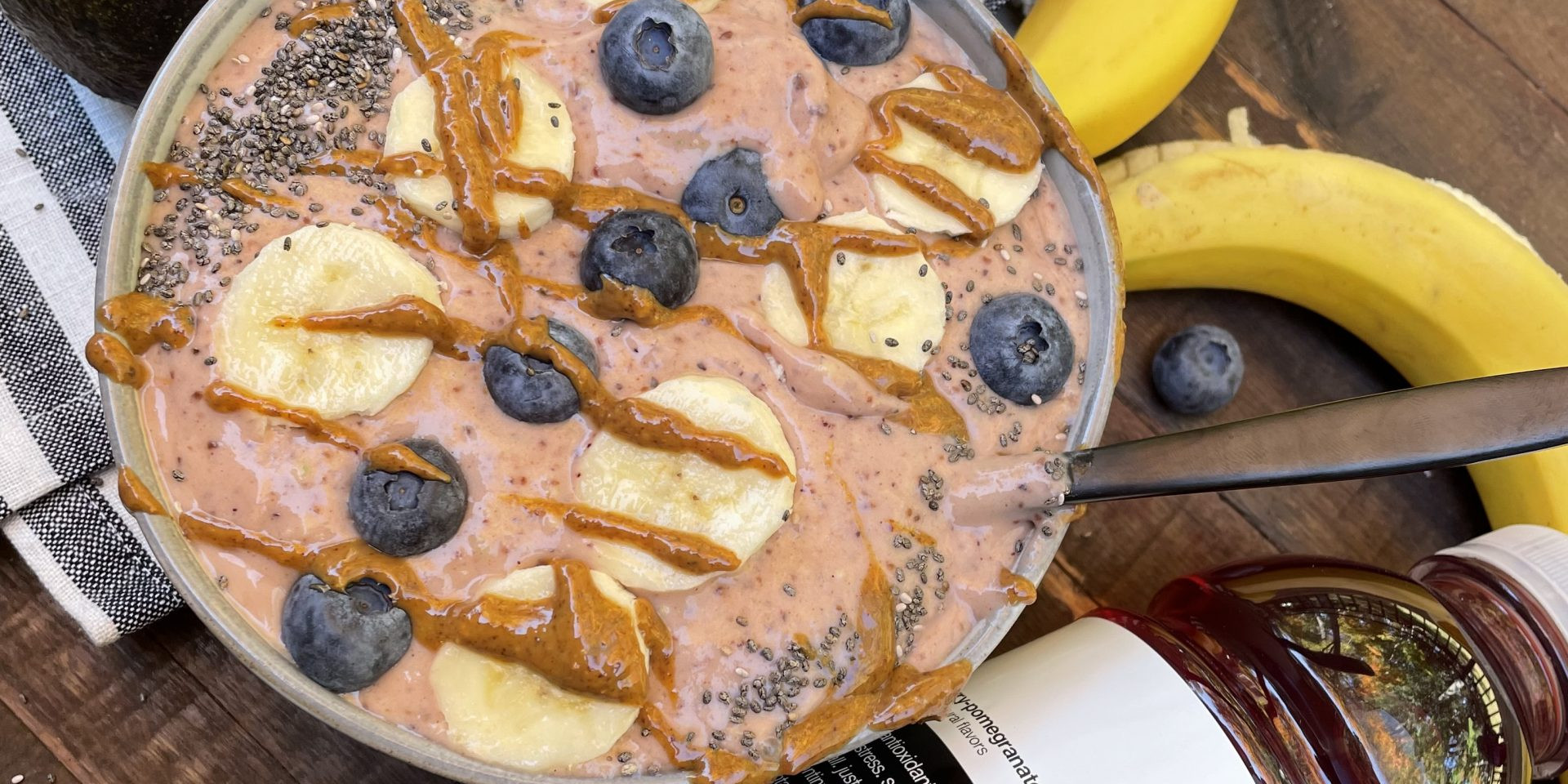
- 1 cup frozen berries
- 1 container (5.3 oz) or 2/3 cup vanilla greek yogurt
- 1 frozen banana
- 1/2 avocado
- 1 tbsp nut butter
- 1/2-3/4 cup Vitamin Water XXX açaí-blueberry-pomegranate
- Optional toppings: chia seeds, sliced fruit, granola, nuts, extra nut butter
Directions: Blend together. Adjust the amount of Vitamin Water for desired consistency.
How to enjoy –
For athletes: The ingredient combo here is perfect for your recovery meal post-run or workout. <You may need to add more protein & carbs.>
For healthy eating: The balance of carbs, protein and healthy fat is what we hope to achieve in our meals. Try this for breakfast or lunch.
For kids: Kids can enjoy this, too! Take 1/4-1/2 of this recipe to give to kids as part of a meal or for a healthy snack.
Recovery Nutrition for Strength Training
Recovery Series Part II: Recovery Nutrition for Strength Training
We opened this series by looking at the important part nutrition plays in recovery from your runs. While such sessions might be your main priority, it’d be a mistake to think that other types of training don’t require a similarly diligent approach. In this post, we’ll look at how refueling right can help you maximize gym workouts, immediate and all-day nutrition needs, and more.
When and what should I eat after resistance training?
Sticking to your resistance training routine is vital if you’re hoping to become a stronger, faster, and more powerful runner, and fueling beforehand is essential. But, to get the greatest benefits, you’ll also need to be refueling enough afterward for your body to repair itself and adapt to the stimuli you’re throwing at it. A lot of endurance athletes fall short because they underestimate their protein and carb needs after sessions. A review published in Frontiers in Nutrition noted that consuming post-workout protein is crucial for stimulating muscle protein synthesis (MPS), which triggers the repair of existing fibers and growth of new ones in response to strength training.
Another reason to refuel soon after strength training is that carbs are your primary fuel source for muscle contractions. This means that you use up a lot of the glucose in your bloodstream and then start draining the stores of glycogen in your muscles and liver. So you need to restock these after you hit the gym so that you have enough glycogen for your next training session. The review authors also wrote that “Carbohydrates have been shown to have a protein sparing effect, therefore the combination of protein and carbohydrate to decrease rates of muscle protein breakdown (MPB) and increase rates of MPS may be the best strategy” if you’re trying to build or maintain muscle mass.
As a general guideline, aim for 50 grams of carbs and 20 to 40 grams of protein within 30-60 minutes after your session. This could come in the form of a full meal, or if you don’t have time, you can break it down into a post-workout shower shake as soon as possible (nail your protein here + some carbs), followed by more carbs within 90 minutes. One of my go-to breakfast recipes for recovery nutrition is baked oatmeal with Greek yogurt, fruit, and almond butter.
How should I fuel for the rest of the day?
In addition to consistently nailing acute refueling right after your strength training, it’s important to know that replenishing protein later on can be beneficial too. Unlike with fat and carbs, your body doesn’t store protein, so you need to consume it regularly to recover from extra workouts. A group of Canadian researchers concluded that athletes who followed a nighttime workout with a protein shake immediately post-workout plus another in the morning scored better in both strength and plyometric tests in their next session. They also had greater whole body protein balance.
Other research has suggested that you can maximize strength, power, and speed gains and put on more lean muscle mass if you spread out protein intake throughout the day, including before training. Doing so can also improve recovery between sessions, reduce muscle soreness, and stabilize mood. Thus, it is important to include 20 to 40 grams of protein in each of your three meals per day. It is also key to note that hitting your protein needs won’t be nearly as beneficial for muscle repair & build if you aren’t eating enough total energy (calories). So, make sure to include carbs and healthy fats in order to consume enough total calories. A good example of a well-balanced meal with adequate macronutrients is slow cooker carnitas tacos w/guacamole.
What else might I need in addition to carbs & protein?
During strength training, your body not only depletes glycogen, but also creatine. This is a peptide that is utilized by the phosphagen (ATP-PC) system to provide energy in your muscles during quick bursts of explosive power, strength, and speed lasting up to 10 seconds. So anytime you’re lifting, jumping, or sprinting, you’ll drain your store of creatine and other phosphates. This means you need to top up your creatine levels before your next workout so that you have enough ready energy for moving quickly and powerfully again. You can obtain some from grass-fed beef, poultry, and fish, but it might not be enough, and if you’re a vegetarian or vegan, obtaining creatine from your diet will be tricky.
This is where a supplement can come in handy. Look for creatine monohydrate, the most widely studied form.The general guideline is to take 5g/d in your shake or dissolved in some other liquid. A review published in Molecular and Cellular Biochemistry concluded that creatine supplementation increases strength and sprint performance, promotes muscle mass gains, and improves high-intensity output.
Check back next week to learn about what supplements are beneficial for recovery.
Need help to nail your recovery nutrition? Check out our Recovery page w/ Recovery Calculator, 1-on-1 and group coaching options.
1. Harry P. Cintineo et al, “Effects of Protein Supplementation on Performance and Recovery in Resistance and Endurance Training,” Frontiers in Nutrition, September 11, 2018, available online at https://www.ncbi.nlm.nih.gov/pmc/articles/PMC6142015/#B28. 2. Daniel W.D. West et al, “Whey Protein Supplementation Enhances Whole Body Protein Metabolism and Performance Recovery after Resistance Exercise: A Double-Blind Crossover Study,” Nutrients, July 11, 2017, available online at https://www.ncbi.nlm.nih.gov/pmc/articles/PMC5537849. 3. Richard Kreider, “Effects of Creatine Supplementation on Performance Training Adaptations,” Molecular and Cellular Biochemistry, March 2003, available online at https://www.researchgate.net/publication/10798699_Effects_of_creatine_supplementation_on_performance_training_adaptations.
Disclaimer: The content in our blog articles provides generalized nutrition guidance. The information above may not apply to everyone. For personalized recommendations, please reach out to your sports dietitian. Individuals who may chose to implement nutrition changes agree that Featherstone Nutrition is not responsible for any injury, damage or loss related to those changes or participation.
5 ways to improve hydration in the cooler months
As runners, we are well aware that hydration needs increase during hot & humid months. But, let’s not forget that hydration continues to be important during the cooler months! Adequate fluid & electrolyte levels help us to run our best & recover our best. For more information on hydration needs, check out our hydration page. We also suggest testing your sweat rate in cooler months, since our sweat rate can vary drastically with changes in the weather. Read our tips for hydration during the cooler months below!
5 tips for improving nutrition in the cooler months:
- Start your day with 16oz of fluid. Good options include water, coffee, tea or Vitamin Water Energy.
- Drink a big glass of water with all 3 meals.
- Add a Power-C Vitamin Water to your afternoon snack. Vitamin C + Zinc support immunity during cold & flu season.
- Continue to carry fluids on runs > 60 minutes.
- Restock glycogen stores post-run or workout with Vitamin Water, or other sports drink, as part of your meal.
Recovery Nutrition for Runners
Recovery Series Part I: Recovery Nutrition for Runners
Our previous few blog posts focused on how you can optimize your performance by fueling during and after short and long runs, strength workouts, two-a-days, and races. As important as pre-training and race fueling is, you’re not going to get the gains you’re seeking unless you are closing the loop by recovering properly afterward. So in this new series, we’ll look at how nutrition plays into recovery, which supplements can help you bounce back quicker, and what you need to do differently when trying to prevent or recover from injury.
What errors do you see in post-run recovery nutrition?
Just as with fueling before and during runs, the biggest mistake anyone could make with post-exercise nutrition is not doing it at all because it will leave your tank empty and undermine the recovery process. Other issues come from allowing chance and circumstance to dictate when you eat for recovery and when you don’t. During the week you might skip it because you’re cramming training in between work and family commitments, while on the weekends you’re more diligent. I totally understand, but inconsistent behavior will leave you with erratic results.
Another issue is trusting your appetite to guide your recovery nutrition. Research suggests that exercise reduces production of ghrelin, the hormone that stimulates appetite, and elevates levels of GLP-1 and PYY, which suppress it. So that’s why we see the counterintuitive thing where you’ve just done a long or intense run but don’t feel hungry, which might lead to you not eating. If you’ve had any kind of GI distress, this could be compounded. But as we’re about to see, skipping post-exercise nutrition is never a good idea and you need a plan, instead of putting too much faith in what your body is telling you.
What are the goals of recovery nutrition?
Once you know that you should be refueling for recovery, it’s time to start thinking about what to eat and when. There’s an ongoing debate in the research about whether 3:1, 4:1, or some other magic ratio of carbs to protein is optimal recovery for training. But ultimately, this is highly situational and misses the larger point that you need to be getting sufficient amounts of both macronutrients at the right time to meet the three main goals of post-run or post-workout nutrition:
-
Restock glycogen stores that have diminished during training
-
Support repair of muscle fibers that are partially broken down during exercise
-
Stop muscle breakdown (catabolism)
A meta-analysis of previous studies published in Medicine & Science in Sports & Exercise compared the effects of consuming protein (PRO) or carbs (CHO) alone on glycogen replenishment to ingesting both after training. The authors concluded that “Glycogen synthesis rates are enhanced when CHO-PRO are coingested after exercise compared with CHO only when the added energy of protein is consumed in addition to, not in place of, carbohydrate.”
In other words, it’s key to get enough of both these macronutrients throughout the day, with extra carbs and protein after training to both refill glycogen stores and trigger muscle protein synthesis. Even if the foods you eat and/or supplements you take have the right carb-to-protein ratio (which hasn’t really been decided), you won’t be recovering well unless you’re also taking in sufficient total energy. What that first paper found about combining protein and carbs to improve glycogen replenishment also applies to muscle repair. One study showed that by adding carbohydrates to our post-run protein, participants increased their muscle protein synthesis by 36 percent.
Why might I need more protein?
Studies have shown that we lose between three and eight percent of muscle mass every decade after we turn 30. But this only goes for people leading a sedentary lifestyle. A team of Danish researchers investigated the impact of regular resistance training and concluded that it “can counteract the age-related changes in function and morphology of the aging human skeletal muscle.” If you’re over 40 and looking to slow the age-related decline in muscle mass, pairing strength training, running, and nutrition can help, but only if you consume enough energy.
We already covered the need for more carbs in a previous post. A paper published in PLOS ONE discovered that endurance athletes need 77 percent more protein than sedentary people, and suggested that you consume up to 1.83 grams per kilogram of bodyweight. This indicates that there isn’t a one-size-fits-all approach to recovery nutrition – your size counts, as does the duration and intensity of your training and, as we’ll see shortly, when you eat after training.
The protein needs discussed in that paper can be elevated if you’re an older runner because although your muscles’ response to exercise remains the same, your body’s uptake of protein diminishes over time. A study published in the British Journal of Nutrition emphasized that to support muscle recovery, younger athletes need 25 to 30 grams of complete protein after training, while older ones require close to 40 grams.
What's the best timing for post-training nutrition?
It’s not just the total amount of protein & carbs that’s important, but also the timing of it. Delaying recovery nutrition reduces glycogen replenishment – by as much as 50 percent according to some research – meaning you’ll be running on a low gas tank next time you train. Waiting too long to eat also hinders muscle repair. Such a delay can leave you feeling excessively sore, increase fatigue, decrease muscle mass, impair immunity, and impact your mood. Over the long term, it could increase your injury risk and mimic the effects of overtraining.
To avoid such issues, research suggests that there are two recovery windows that we can take advantage of. The first is within 30 to 60 minutes after training, when glycogen and muscle protein synthesis potential both peak, and the second is the rest of the day. It’s important to know that this doesn’t only go for “hard” sessions. Just as you need to fuel before every run, recovery nutrition that focuses on a combination of carbs and protein in both these windows is also essential after all runs and workouts.
What should good recovery meals & snacks look like?
The easiest way to nail your recovery nutrition is when a regularly scheduled meal quickly follows your session, such as a pre-lunch run or before-dinner gym workout. In which case, you can meet your macronutrient needs by combining a protein source like meat, eggs, fish, or cheese with carbs like pasta, rice, potatoes, or bread (check out some recipe ideas here). One of my go-to choices is the EBTB egg sandwich from my Fuel It Up E-Cookbook, as it’s easy to make, contains plenty of carbs, and packs a protein punch. If you want to nerd out further, play around with our Recovery Calculator to see how much carbs & protein you need for post-run/workout recovery.
If you aren’t going to be able to make a meal within an hour of finishing training, then have a quick option on hand so you don’t miss out on the first recovery window. This is how the shower shake concept was born– so if you’re pushed for time, you can mix protein powder, milk or milk alternative, fruit, and – if you want some extra healthy fat – nuts or seeds, and drink it all down in the shower. If you are on-the-go, pack your liquid + protein powder + carb mix, shake it up and drink it on the way home from where you go to do your long runs, track sessions, or gym workouts. Hot tip: Shower shakes taste better in our Featherstone Nutrition blender bottle.
Remember though that while a protein shake is ideal for starting the refueling process within the 30 minutes immediately after training, it’s not a meal. So you’ll need to either get breakfast, lunch, or dinner 60-90 minutes later, or get another snack that contains protein and carbs to continue helping your body restore and repair. You could also break down your recovery nutrition into two smaller meals, depending on what your calendar and food access dictate. I like the convenience of having a whole batch of homemade bars, bites, or muffins in my fridge or freezer, which I can pair with fruit, Greek yogurt, toast, and other convenient options to get my recovery going between meals.
Don’t forget to include hydration in your recovery nutrition strategy. Researchers from Florida International University found that dehydration increased muscle soreness, which shows the importance of hydrating before, during, and after training. If you’ve sweat a lot too, be sure to replenish electrolytes, particularly sodium, as well. Not sure how much fluid you need? Check out my handy hydration calculator.
If you start regularly nailing your recovery nutrition, the a-ha moments will likely begin. You may notice a quicker bounce back between sessions, increased lean muscle mass, less soreness, faster times, improved energy and mood levels, and fewer injuries. Remember to include plenty of protein and carbs, always refuel after every training session, and be prepared with your nutrition so you don’t sacrifice your recovery to the chaos of your calendar.
Need help to nail your recovery nutrition? Check out our Recovery page w/ Recovery Calculator, 1-on-1 and group coaching options.
Check back soon for part two, in which we’ll riff on the role of supplements in recovery nutrition.
1. Lee M Margolis et al, “Coingestion of Carbohydrate and Protein on Muscle Glycogen Synthesis after Exercise: A Meta-Analysis,” Medicine & Science in Sports & Exercise, February 2021, available online at https://pubmed.ncbi.nlm.nih.gov/32826640. 2.BD Roy, “Effect of Glucose Supplement Timing on Protein Metabolism after Resistance Training,” Journal of Applied Physiology, June 1997, available online at https://pubmed.ncbi.nlm.nih.gov/9173954. 3.H Klitgaard et al, “Function, Morphology and Protein Expression of Ageing Skeletal Muscle: A Cross-Sectional Study of Elderly Men with Different Training Backgrounds,” Acta Physiologica Scandinavica, 1990, available online at https://pubmed.ncbi.nlm.nih.gov/2275404/. 4.Hiroyuki Kato et al, “Protein Requirements Are Elevated in Endurance Athletes after Exercise as Determined by the Indicator Amino Acid Oxidation Method,” PLOS ONE, June 20, 2016, available online at https://www.ncbi.nlm.nih.gov/pmc/articles/PMC4913918. 5.Yifin Yang et al, “Resistance Exercise Enhances Myofibrillar Protein Synthesis with Graded Intakes of Whey Protein in Older Men,” British Journal of Nutrition, November 2012, available online at https://pubmed.ncbi.nlm.nih.gov/22313809. 6. Michelle A Cleary et al, “Dehydration and Symptoms of Delayed-Onset Muscle Soreness in Normothermic Men,” Journal of Athletic Training, 2006, available online at https://pubmed.ncbi.nlm.nih.gov/16619093.
Disclaimer: The content in our blog articles provides generalized nutrition guidance. The information above may not apply to everyone. For personalized recommendations, please reach out to your sports dietitian. Individuals who may chose to implement nutrition changes agree that Featherstone Nutrition is not responsible for any injury, damage or loss related to those changes or participation.
Fueling for race day
Fueling for runners part III: Fueling for race day
In the previous two articles, we explored why you need to fuel for long and short runs and how to fuel your strength sessions and two-a-days. Now, it’s time to get into one of the topics I get asked about the most: race day fueling. We’ll look at how to know if your current plan is working or not, what to do before, during, and after races, and why you need to practice your race day fueling strategy in training.
What should my pre-race nutrition look like?
While eating a quick snack can provide enough fuel for a short run or quick gym session, you’ll need to rewind a little bit to make the most of your pre-race nutrition and hydration. You could carb load for three days in the week leading up to the event, but if you’re new to it, the day before is a good place to start. Make sure you’re drinking plenty of water and slowly increase the amount of carbs you eat in each meal (look out for a future post on carb loading). Avoid any foods that cause you GI distress because as tasty as that curry might be at the time, it could come back to haunt you tomorrow! For help with carb loading, take a look at our carb load page and free carb load guide.
On race day itself, fueling should be easy, supportive, and simple, not a distraction or source of stress. Eating enough will ensure that you have sufficient energy at the start of the race, and as you won’t be in a calorie or carb hole, will make it easier to refuel during it. Though it’s individualized, a good rule of thumb is to consume around 75 grams of simple carbs 2-3 hours before your race. Finishing a bagel and a small banana or 6 graham crackers two hours before the event takes care of that.
If your race has a later start – such as the Boston Marathon – try eating a meal that contains 0.5-1 gram of carbs per pound of bodyweight with a bit of fat and/or protein 4 hours beforehand (like a bagel with peanut butter and a banana), then a high-carb snack 90 to 120 minutes before the start (such as six graham crackers). Or if you want to keep it even simpler, aim for 75g carb each at those times.
On the hydration side, plan to drink 8 – 16 ounces of water or sports drink , stopping 1 hour before race time, and then sip to thirst after that. If the weather changes and it’s going to be hotter and more humid, you might need a little more fluid and electrolytes. Whereas if the forecast calls for cooler temperatures, you may need a bit less if you’d planned for heat. Only make minor changes and try not to shake up your plan when you’re within 48 hours of the race itself.

Signs of adequate fueling
So how can you know if your race day fueling strategy is or isn’t working? While helping my clients prepare for race day, some of the common red flags for underfueling seen during training include hitting the wall, struggling to obtain or maintain race pace, and the dreaded DNF (did not finish). Then there are digestive troubles, like nausea, inability to take gels later in the run or other GI distress. Underfueling problems on race day may include only taking one or two gels during a marathon and not drinking any fluids (yes, really).
These are all indications that you need to do something different. In contrast, if you’re getting things right on race day, you should be fueling early and often, feeling supported by your nutrition and hydration the whole way, able to hold your race paces until the end, and finishing with a smile on your face. Remember that there’s always room for improvement. Someone told me he’d broken three hours for the marathon with no gels. My thought? “Imagine how much faster you’d go if you were fueling!”
Trying something new on race day is not a good idea
One of the most common reasons for a race day fueling strategy falling flat is that the athlete is trying it out for the very first time. This is why I always remind clients to “practice, practice, practice.” You put so many hours into the physical elements of your training, so why would you leave your nutrition and hydration to chance?
Finding the right fuel is much easier when you can test options during training. Sports gels are usually the best choice for most people. Try out different kinds until you decide which one works for you. Real food gels made from maple, rice, and other whole foods can work for some, but they’re more slowly absorbed so take that into account when selecting the best sports fuel for you.
Practicing race day strategy in training also gives you the chance to figure out how you’re going to carry your fuel and fluid. A sports bra with a big pocket on the back has plenty of space if I don’t bring my phone. Another option is tucking a Koala Clip inside the back of their bra, wearing shorts with pockets up top so they’re not annoyed by gels bumping into their legs, or using an adjustable belt that you can fill with fuel. Some hold water bottles too, but if that’s too clunky, you’d be better off with a handheld bottle or hydration vest. Find what works for you and practice!
Which runs should I use to practice race day fueling?
When you’re still in the trial-and-error phase, it’s best to try out your fueling plan on longer, low-to mid-intensity runs. Eventually, you’ll want to practice with race-pace sessions, but as these higher-intensity runs are so physically demanding, you should build up to that. It’s going to be difficult to focus on split times if you’re experimenting with a new gel or tinkering with the timing of refueling. You’ve also got to get your body used to accepting and utilizing more fuel than you’re probably used to, which won’t happen immediately. Start by taking half a gel or portion of chews every time you refuel. It can take time to “train” your fluid intake too, so try slowly increasing this on each trial run.
Once you’ve finished experimenting with fuel choice, carbs-per-hour and fluid-per-hour amounts, and nutrient scheduling (keep reading for tips on all this), then it’s time to take things up a notch and put your refueling plan into action with a marathon-paced effort. This way, you’ll know if your strategy will stand up to race day demands. A study published in Sports Medicine asserted that you need to condition your gut to function in realistic, race-like conditions. “‘Nutritional training’ can improve gastric emptying and absorption and likely reduce the chances and/or severity of GI problems, thereby improving endurance performance as well as providing a better experience for the athlete,” the author wrote.
As the physiological load will be higher than during your earlier, slower efforts, you might find that things don’t go perfectly. That’s OK! Just make mental notes of what succeeded and didn’t, and then make small adjustments on your next practice run. Once you’ve repeated this experiment a few times, you should have ironed out the kinks. Then you’ll have confidence knowing that you’re going to show up on race day with a tried-and-true approach that will get you through the course. Now you just need to show up and put your fueling plan into action.

When do I need to fuel during the race?
Carbs are going to keep you going faster for longer on race day. A research duo from Maastricht University Medical Center in Holland stated that “carbohydrate ingestion during prolonged (>2 h) moderate-to-high intensity exercise can significantly improve endurance performance.” The authors went on to say that while older studies suggested 60 grams per hour was the limit for usable carb consumption, “well-trained endurance athletes competing longer than 2.5 h can metabolize carbohydrate up to 90 g/h.” Most people are usually in the 30-to-60 gram range, though if I’m working with an elite athlete, they might need to go beyond that. To figure out your personal race fueling needs, use my free calculator.
Just like on any long run, it’s essential to fuel early and often in a race. When combined with proper pre-race nutrition, nailing your carb intake in the first half will set you up to finish strong and means that if you miss a gel later, it’s less of an issue (same goes for fluid). One of the major mistakes I see is delaying the first fuel-up. If you wait to take a gel until you feel you need it, you’re actually way past the point that your body requires that energy. Then it will take at least 15 minutes more for the gel to be absorbed, by which point you might be running on fumes. So, make sure you take your first gel in the first 30 minutes of the race and then roughly every 30 minutes for the rest of the race.
If you happen to miss a gel, you might be tempted to take two at the next half-hour interval. I’d advise against that because it might be too much for your stomach to handle. Maybe you take the next gel less than 30 minutes out and adjust the rest of your fueling schedule from there, but don’t try to cram too much in to catch up or it could backfire.
What about hydration & caffeine?
To stay hydrated and help your body absorb mid-race carbs, aim for at least five to 10 ounces of fluid per hour. If you are a heavy sweater, or it’s hot or humid, you may need more (take a look at our hydration page for more detail). You can achieve this by sipping water or a sports drink (yes, you can mix this with gels) or by drinking one to two aid station cups per hour. To make this easier, get your gel down before you reach the station so you’re not fumbling with both. Don’t wait till you get to race day to figure this out – plan ahead to know where water and aid stations will be and what they’ll offer. Then combine that on-course fluid with whatever you’re going to bring along. Remember that drinking to thirst isn’t going to work while racing – you need to stick to your hydration and fueling plan.
As you’ll be losing sodium, you will need to replenish this through a combination of your fuel and fluids. Some gels – like Maurten – might not contain enough by themselves, so you can use a sports drink like Skratch Sports Hydration. Again, play with this combo during training runs so you’ve nailed it well before race day. Important note: Hydration needs are highly individualized – if you need help with your race day hydration, take a look at our Customized Race Fuel & Hydration Plan.
Caffeine can be a touchy subject for many racers. If you drink it every morning, then feel free to on race day. If you don’t normally drink caffeine, it may not be the best choice for you. During the race, a line of best fit is to alternate caffeinated and non-caffeinated gels. This might be too much for you if you’re sensitive to caffeine or metabolize it quickly – again, this is where practice runs come in. We’ll do a separate post on caffeine soon, but in the meantime, you can read more here, and remember that it takes 60-90 minutes for it to peak in your system so consider your timing carefully.
Hopefully, this post helped you to identify gaps in your race day fueling strategy, learn how to close them, and see how to practice your new tactics before you show up to the starting line. For even better results, my customized race day fuel and hydration plan can help you dial in a personalized approach. Check back soon for our new series on recovery!
1. Asker E Jeukendrup, “Training the Gut for Athletes,” Sports Medicine, March 2017, available online at https://pubmed.ncbi.nlm.nih.gov/28332114. 2. Naomi M Cermak and Luc J C van Loon, “The Use of Carbohydrates During Exercise as an Ergogenic Aid,” Sports Medicine, November 2013, available online at https://pubmed.ncbi.nlm.nih.gov/23846824/#affiliation-1.
Disclaimer: The content in our blog articles provides generalized nutrition guidance. The information above may not apply to everyone. For personalized recommendations, please reach out to your sports dietitian. Individuals who may chose to implement nutrition changes agree that Featherstone Nutrition is not responsible for any injury, damage or loss related to those changes or participation.
Pick Me Up Smoothie
Smoothies are an easy way to consume the nutrition we need. For healthy eating, we can incorporate smoothies into virtually any meal or snack and alter our ingredients based on our needs. Need you need some extra fruit, veggies or protein? Simply gather ingredients & blend away!
For athletes, there are several ways that we can enhance our performance pre-run through nutrition. Carbohydrates are essential to provide quick fuel for your body to use for energy during your run (you can read more on WHY we need pre-run carbs in our previous post here). Caffeine has been shown to decrease perceived effect, decrease pain, and improve mental toughness (read more on the benefits of caffeine for performance here).
Our Pick Me Up Smoothie made Vitamin Water Tropical Citrus Energy provides carbs, caffeine and also adds B12. This combination will provide adequate fuel with an extra boost of energy. Give it a try to fuel it up before your run or as part of a meal or snack!
Pick Me Up Smoothie
- 1 bottle Tropical Citrus Energy Vitamin Water
- 1 cup frozen tropical fruit
- 1 small banana
- Instructions: Blend together & enjoy immediately!
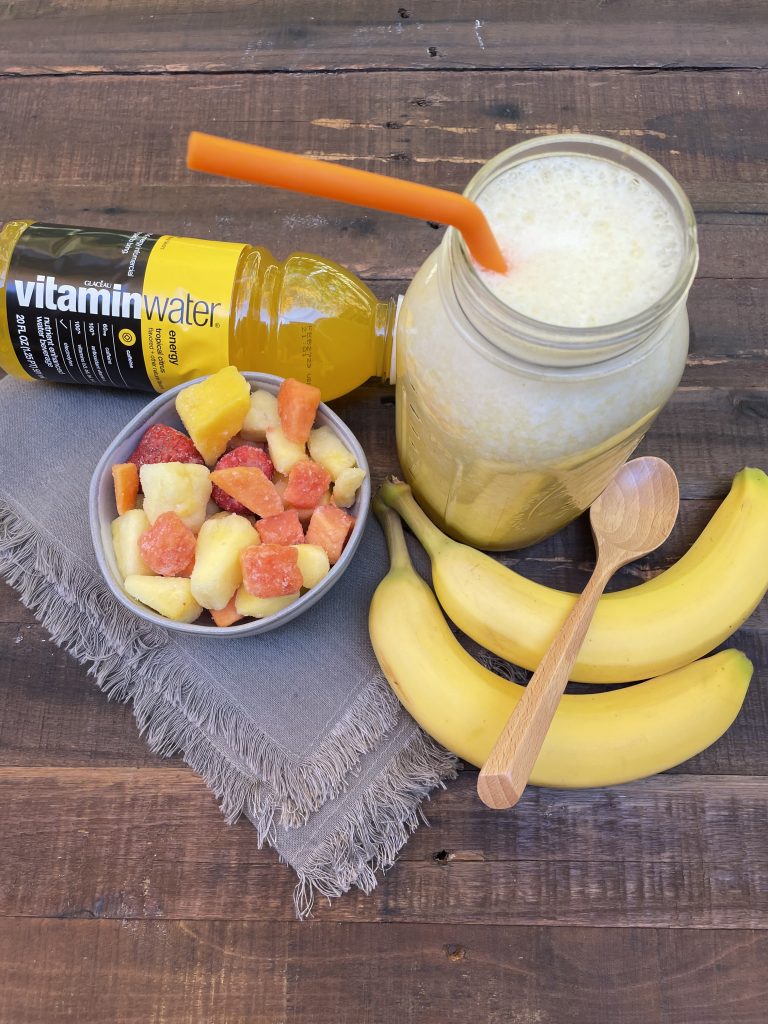
How-to-use:
Athletes: Make this for your pre-run fuel & drink 0-60 minutes before your run.
Healthy Eating: Providing carbs (including a serving of fruit), this smoothie can work as part of a healthy snack (ex. paired with a handful of almonds) or as part of a meal (ex. turkey sandwich + smoothie).
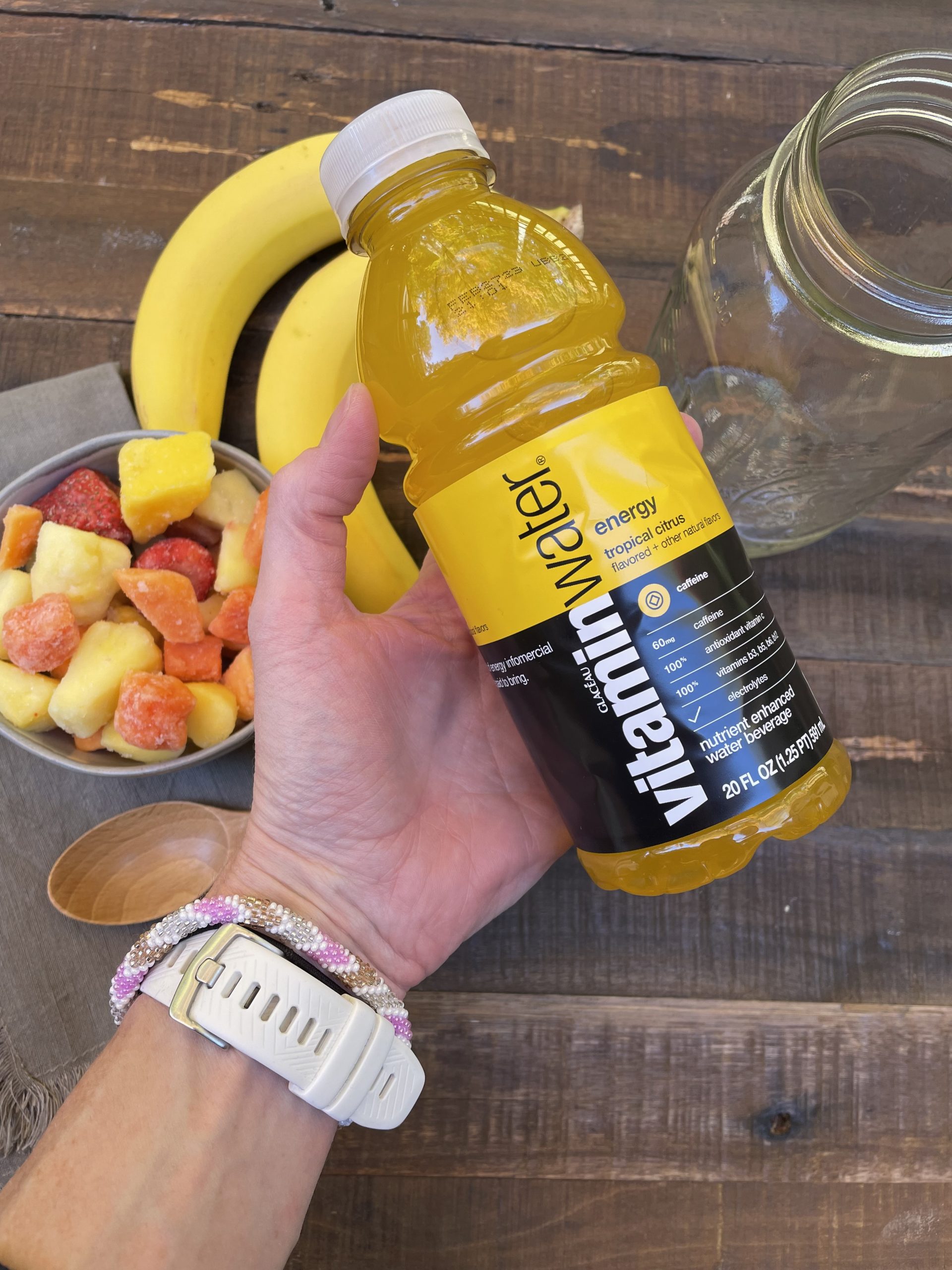
Fueling for strength training & two-a-days
Fueling for Runners Part II: Fueling for Strength Training & Two-a-Days
Last week, we explored why and how you should fuel for long and short runs and speed sessions. Now let’s move on to other types of training that a lot of athletes ask me about: strength training sessions and two-a-days. Keep reading to find out why your fueling needs for these workouts are different, what happens if you’re not eating adequately for your workouts and how you can power up your performance by making just a few simple fueling tweaks.
When considering your fueling needs for running, you should take into account both exercise duration and intensity. It’s an even bigger consideration when you throw strength training into the mix as a standalone session or part of a two-a-day. Whether you’re leaping through plyometric exercises or lifting barbells, kettlebells, and other weights, gym workouts tend to be high intensity. And as you could be using many different muscle groups, you’re going to consume an awful lot of energy in even your shortest strength or power workouts. Going for a run the same day? Now you need even more fuel.
The trouble I find with many new clients whose gym sessions and two-a-days aren’t working for them isn’t the programming itself; it’s that they only focus on fueling for runs OR workouts and usually aren’t sure how to fuel for BOTH. Not fueling your body properly for your workouts can lead to short changing your sessions and overall gains.
Why you need carbs before strength workouts
Much like with running, gym training requires quick-acting fuel that’s available on demand. This is a prerequisite for rapid muscle contractions – concentric as you shorten the muscle fibers and eccentric while you lengthen them under tension. These kinds of exercises not only require you to move quickly but also powerfully (think the combination of strength and velocity), which recruits a greater number of muscle fibers and takes even more energy.
A review released via Sports Medicine stated that carbs make “a greater relative contribution to energy production where exercise is of moderate-to-high intensity,” with standard volume strength training depleting glycogen stores by 24 to 40 percent. The authors explained that this can be much higher, referencing a prior study that observed glycogen running out in certain muscle fibers. With this in mind, they concluded that ingesting pre-workout carbs improves performance in high-volume strength workouts lasting 45 minutes or longer and/or when you haven’t eaten for eight hours (such as when you hit the gym first thing in the morning).
These physiological demands show why it’s essential that you’ve got enough fast fuel available to go into overdrive set after set and rep after rep, like a car getting a nitrous oxide boost in The Fast and the Furious. This means blood glucose first and stored glycogen second, both of which are provided by – you guessed it, carbohydrates. Just like on your runs, fat could potentially be utilized for fuel in your strength training but because it takes so long to access and utilize, it’s unsuited to the task. Instead, plan to top up your gas tank with carbs before you hit the weights, which you could get from a piece of toast, half a bagel or muffin, or a small bowl of cereal. Afterwards, don’t forget your post-workout recovery nutrition of protein + carbs (we will discuss recovery nutrition in future articles).
How do I fuel for a two-a-days?
Some athletes find it challenging enough to dial in their fueling for a single daily workout, so what happens when we throw two-a-days into the mix? If you are not fueling adequately, the answer is often that you end up in a calorie deficit, don’t intake sufficient protein to start the repair process, and consume too few carbs to replenish your glycogen stores for the second session. As a result, you might be sluggish and slow during training and fatigued and sore afterward.
To avoid this, aim to take in at least 25 to 30 grams of carbs before lifting or running (whatever comes first), and make it more if you’re planning to go longer or harder. If you have hours in between your workouts, you should refuel in between with a combination of carbs and protein with three purposes in mind – replenishing nutrients you just used, beginning the repair process, and fueling up for what’s to come.
Another review of studies that investigated the link between carb intake and resistance training noted that if “there is another high-intensity workout planned that day for the same musculature, higher carbohydrate intakes up to 1.2 g/kg/h may be warranted to maximize glycogen resynthesis in between workouts.” An International Society of Sports Nutrition position paper suggested “combining carbohydrates (0.8 g/kg/h) with protein (0.2-0.4 g/kg/h)” when there’s less than four hours between workouts. While whole grains and low-glycemic foods are often nutrient rich, they recommended easily digestible ones that are high on the glycemic index when trying to refuel between two-a-day workouts.
These numbers might seem like they only complicate matters but refueling post-run and pre-lift or vice versa doesn’t need to be tricky. Eat a meal or large snack that includes carbs + protein, such as cottage cheese with fruit, or a buffalo chicken salad sandwich. If you need something quick & easy, try a Shower Shake that also includes protein powder, oats and fruit. Quantities of carbs and protein is depending on your body size, age & workouts, as well as if your recovery nutrition is a snack or a meal.
In addition to providing more fuel for the physical side of your second workout, fueling in between your two-a-days will help you achieve better cognitive performance. If your blood sugar is too low after the first session, you’ll probably struggle to focus and pay attention during the second one. Whereas if you eat carbs, you’ll be more alert and focused, maintain proper form, and concentrate on cues that can ensure you have a high-quality session.
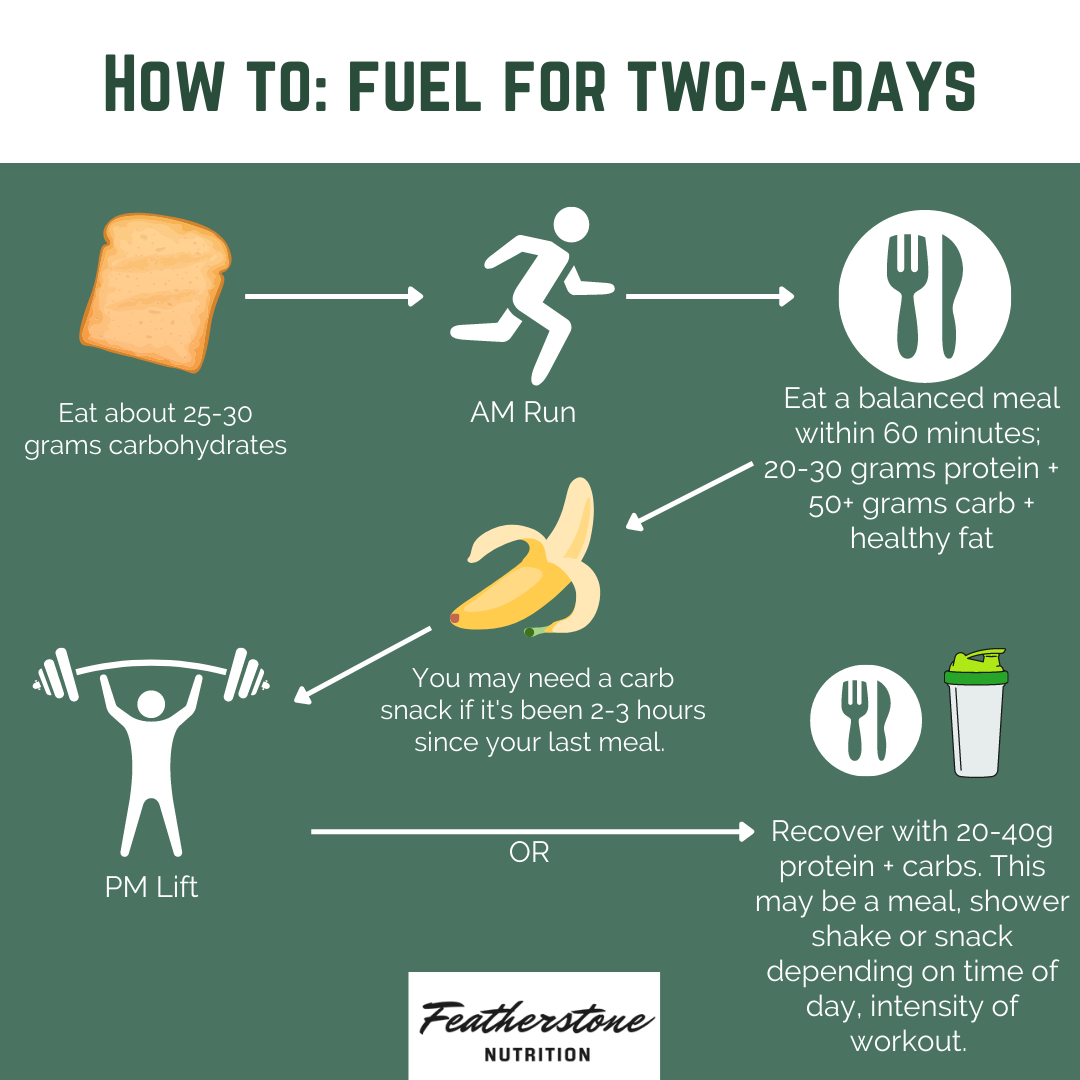
How do I fuel for a strength training immediately before running?
If you lift and run back-to-back, take a guess at what our fuel source before each segment is…CARBS! Aim to take 25-30 grams of carbs before your lift and then another 25-30 grams of carb before your run (or more if you are running >70 minutes). See our last blog post for tips and examples.
In summary, you should always fuel with carbs before every run and strength training workout. Eating solid meals between two-a-days is also a must. Don’t worry if you have to add an extra snack or meal during the day and/or another one at night – your body needs that additional energy to perform and recover well. Stay tuned to future articles focusing on recovery post-runs and workouts.
Check back soon for the final installment of this series, in which we’ll break down fueling for race day.
1. Andrew King, “The Ergogenic Effects of Acute Carbohydrate Feeding on Resistance Exercise Performance: A Systematic Review and Meta-Analysis,” Sports Medicine, July 9, 2022, available online at https://link.springer.com/article/10.1007/s40279-022-01716-w. 2. Harry P. Cintineo et al, “Effects of Protein Supplementation on Performance and Recovery in Resistance and Endurance Training,” Frontiers in Nutrition, September 11, 2018, available online at https://www.ncbi.nlm.nih.gov/pmc/articles/PMC6142015/#B28. 3. Daniel W.D. West et al, “Whey Protein Supplementation Enhances Whole Body Protein Metabolism and Performance Recovery after Resistance Exercise: A Double-Blind Crossover Study,” Nutrients, July 11, 2017, available online at https://www.ncbi.nlm.nih.gov/pmc/articles/PMC5537849. 4. Menno Henselmans et al, “The Effect of Carbohydrate Intake on Strength and Resistance Training Performance: A Systematic Review,” Nutrients, February 18, 2022, available online at https://www.mdpi.com/2072-6643/14/4/856. 5. Chad M. Kerksick et al, “International Society of Sports Nutrition Position Stand: Nutrient Timing,” Journal of the International Society of Sports Nutrition, August 29, 2017, available online at https://pubmed.ncbi.nlm.nih.gov/28919842.
Disclaimer: The content in our blog articles provides generalized nutrition guidance. The information above may not apply to everyone. For personalized recommendations, please reach out to your sports dietitian. Individuals who may chose to implement nutrition changes agree that Featherstone Nutrition is not responsible for any injury, damage or loss related to those changes or participation.








